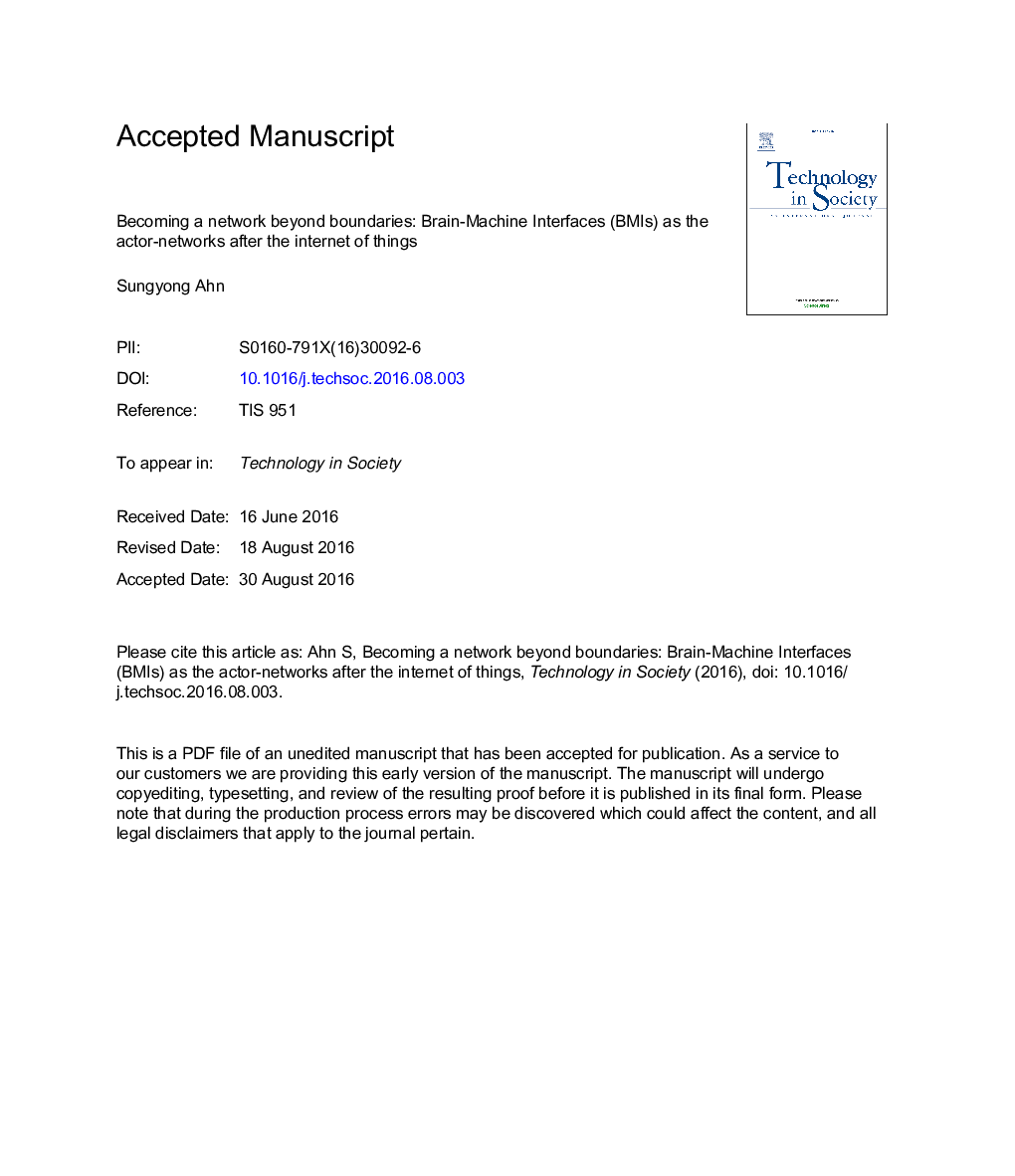| کد مقاله | کد نشریه | سال انتشار | مقاله انگلیسی | نسخه تمام متن |
|---|---|---|---|---|
| 6851511 | 622662 | 2016 | 43 صفحه PDF | دانلود رایگان |
عنوان انگلیسی مقاله ISI
Becoming a network beyond boundaries: Brain-Machine Interfaces (BMIs) as the actor-networks after the internet of things
دانلود مقاله + سفارش ترجمه
دانلود مقاله ISI انگلیسی
رایگان برای ایرانیان
کلمات کلیدی
موضوعات مرتبط
علوم انسانی و اجتماعی
مدیریت، کسب و کار و حسابداری
کسب و کار و مدیریت بین المللی
پیش نمایش صفحه اول مقاله

چکیده انگلیسی
For the last few decades, actor-network theory has been usually criticized for its focus on Machiavellian human actors controlling the overall networking between other actors or blamed for its dissipation of human agencies within the global status of a network. However, at the moment of its development, the freshness of actor-network theory was more relevant to its focus on the meaning of what the hyphen signifies; not so much just a simple connection between two independent variables, but an ontological event itself, from which certain entities juxtaposed together become involved by exchanging stable influences each other thus settled down as the actors participating in a network being associated as the summing up of these settled influences. The aim of this paper is to refresh this bygone freshness of ANT from the recent development of the Internet of Things (IoT); which vividly exemplifies how a network and its actors are generated from a manifold technologically augmented entities-such as smart appliances in a house, migratory animals with RFID tags, and ensembles of neurons signaling beyond one's brain through a bundle of microwires-each of which is physiologically or algorithmically adaptable to the environmental signals from other entities thus able to be settled down together into “new sensor/processor/actuator affiliations.” Brain-Machine Interface (BMI), developed by Nicolelis Lab at Duke University as a prototype of the future neuroprosthetics, shows a specific example of these networks of things; in which mutual adaptations of the technologically augmented entities-namely neurons and robot limbs-associate artificial sensory-motor circuits, programming its human/animal users' possible motor behaviors as well as their motor intentions.
ناشر
Database: Elsevier - ScienceDirect (ساینس دایرکت)
Journal: Technology in Society - Volume 47, November 2016, Pages 49-59
Journal: Technology in Society - Volume 47, November 2016, Pages 49-59
نویسندگان
Sungyong Ahn,